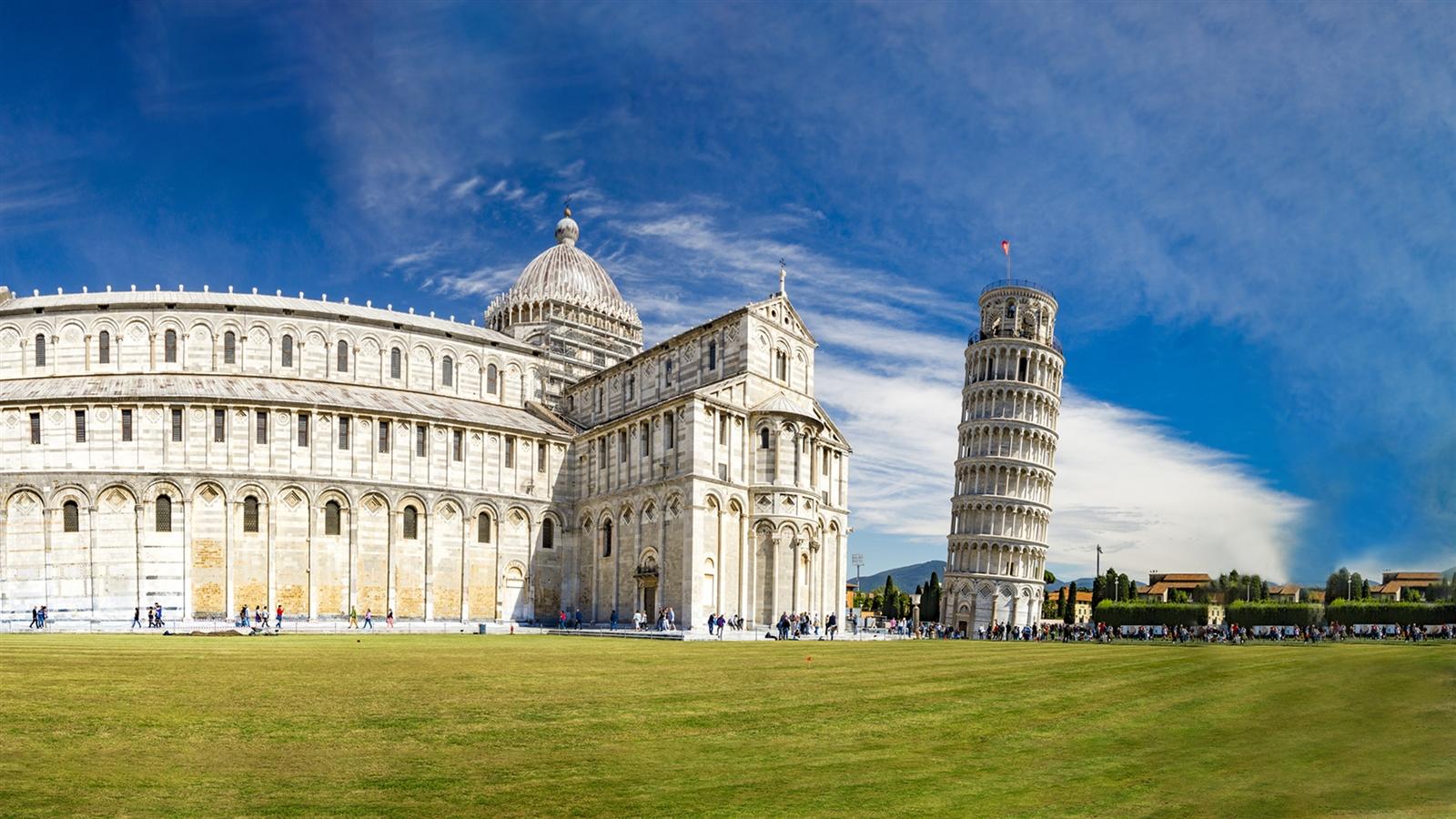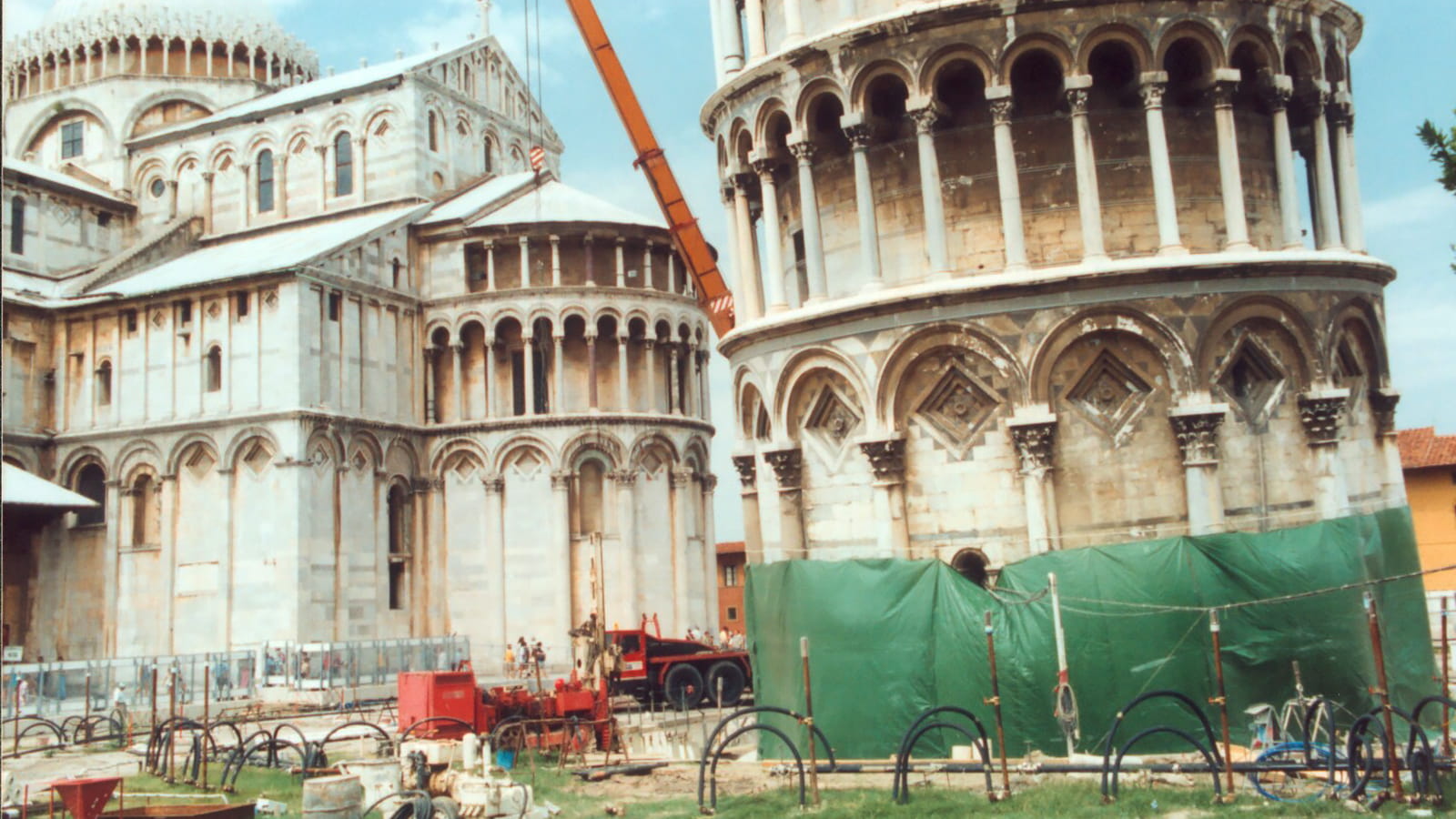The Leaning Tower of Pisa: Now on Secure, Lasting Foundations
The Leaning Tower of Pisa was originally intended to be a free-standing bell tower (campanile) for the Cathedral of Pisa. Poor soil conditions and the weight of the first three floors caused deformation in the clay-rich muddy soil, causing the base of the tower to begin to lean just 12 years after the foundation stone was laid in 1173. A century later, a second team tried to correct the lean by building the following four floors at a slant, but building was interrupted again, not to be completed until two centuries later.
Measurements taken since 1911 showed the tilt of the tower to be increasing at around 1.2 mm each year. A special commission was formed – the Consorzio Progetto Torre di Pisa – towards restoring the building that had been given world heritage status. The commission hired our geotechnical engineers for consultation in 1986, and we examined the first soil samples from the foundation area. The aim of the restoration was not to straighten up the tower completely, but slightly correct the tilt and stabilize the tower in this position. However, the tower had to be closed to visitors in January 1990 after reaching a critical angle.
It’s amazing that the Tower of Pisa should remain so fashionable, even at 800 years old.
CDM Smith has provided restoration support and ground freezing to ensure the stability of the tower through site soil studies, construction support and advice, as well as supervision. We advised the special commission on the impact of construction on the tower’s tilt and the stability of the tower during the restoration process, and supervised further construction work during ground freezing. The tower’s tilt was finally reduced by 44 cm after 12 years of construction, and tourists have once again—the first time since 2001—been able to climb up this symbol of the city of Pisa and view it from the inside.

The Leaning Tower of Pisa was a special project.











